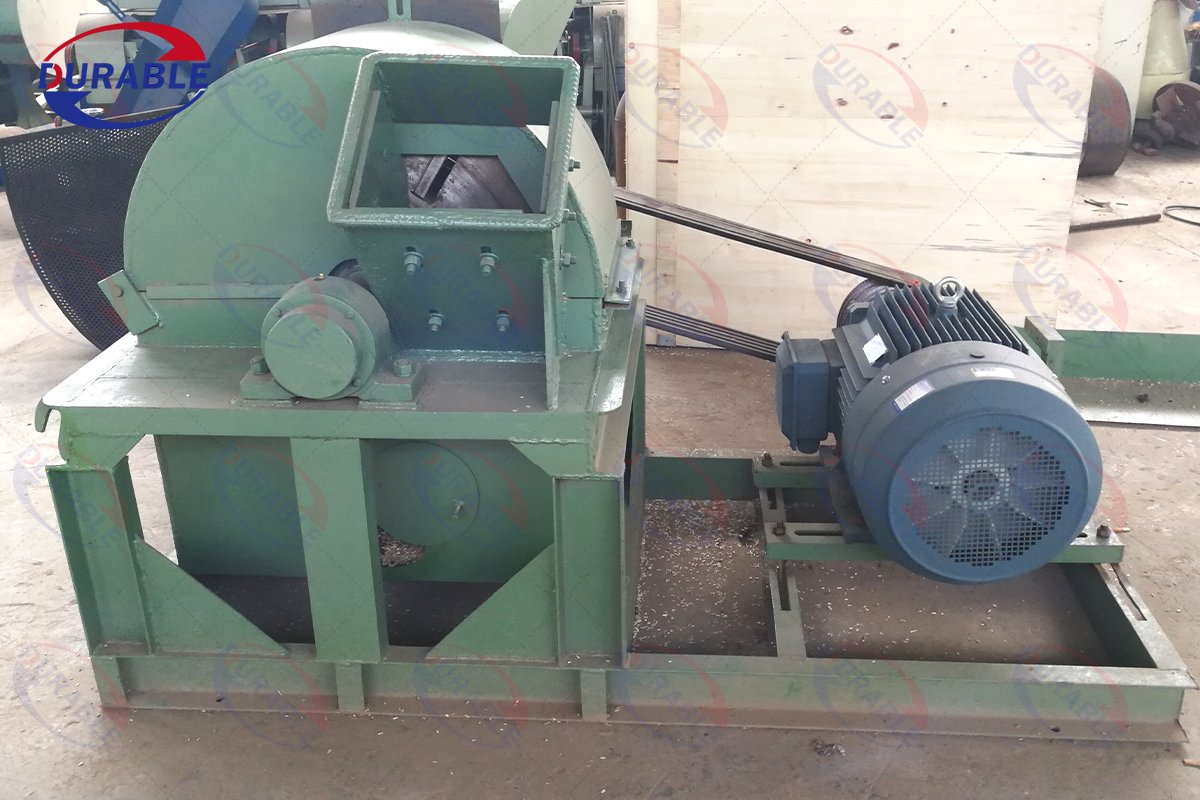Disc Wood Chipper
A Disc Wood Chipper is a machine designed to reduce large pieces of wood—such as logs, branches, and timber waste—into small, relatively uniform wood chips.
Key Features:
- High-Quality Chips: Disc chippers are renowned for producing very uniform, high-quality chips with a consistent size and thickness. This is crucial for certain industrial applications.
- Energy Efficiency: The flywheel effect provides significant momentum, which helps to smooth out the power demand on the engine or motor, making it relatively energy-efficient.
As a manufacturer of Biomass Energy Equipment since 2001, we at Durable understand that the first step in any successful biomass operation is creating high-quality, uniform wood chips. The Disc Wood Chipper is a powerful machine designed specifically for this task. You are likely here because you need to turn logs, branches, or wood waste into a valuable resource, but you’re facing a key decision: is a disc chipper the best choice, or should you consider a drum chipper? This guide will give you the clear, straightforward answers you need. We’ll break down the real differences, help you understand the operational costs, and ensure you invest in the right machine for your feedstock and your business goals.
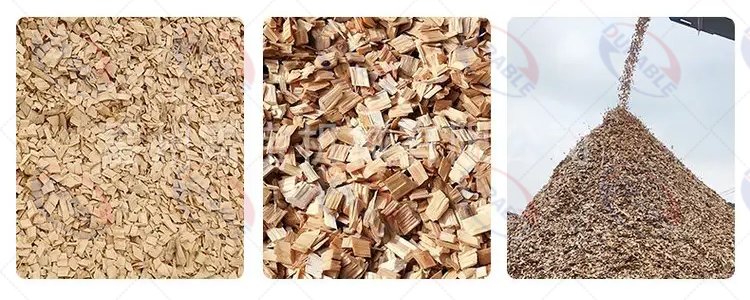
Table of Contents
- How Large Are the Logs a Disc Wood Chipper Can Handle?
- Are the Wood Chips Uniform? Can You Adjust the Size for Pellets or Papermaking?
- Disc vs. Drum Wood Chipper: What’s the Core Difference and How Do I Choose?
- Should I Choose a Mobile Diesel or Stationary Electric Model?
- How Durable Are the Blades, and How Often Do They Need Maintenance?
- How Do You Integrate a Disc Chipper into a Biomass Production Line?
- FAQs
How Large Are the Logs a Disc Wood Chipper Can Handle?
A Disc Wood Chipper is designed to handle a wide range of wood sizes, from small branches to substantial logs. The maximum feed diameter depends on the model’s size, typically ranging from 150 mm (about 6 inches) for smaller models up to 500 mm (about 20 inches) for large industrial units. The machine works by pulling the wood into a heavy, spinning steel disc. This disc is fitted with several sharp knives. As the disc rotates, the knives slice the wood at a precise angle, producing uniform chips that are then discharged from the machine. The power of the main motor (or diesel engine) and the physical size of the feed opening are the two factors that determine its capacity. It’s an ideal machine if your raw material consists of round logs, sawmill offcuts, or large tree limbs that need to be processed into a consistent product.
Are the Wood Chips Uniform? Can You Adjust the Size for Pellets or Papermaking?
This is the number one reason why many operations choose a Disc Wood Chipper. It is renowned for producing highly uniform, consistently sized wood chips. The quality and consistency of your wood chips are critical for downstream processes. For example, in a Wood Pellet Production Line, uniform chips dry more evenly and flow better through the hammer mill and pellet die. In papermaking, chip consistency is essential for achieving uniform pulp quality.
Yes, you can adjust the output chip size. The thickness of the wood chips is determined by two main factors:
- Knife Projection: This is the distance the blades stick out from the face of the disc. Increasing this distance will produce thicker chips, while decreasing it will produce thinner ones.
- Feed Speed: The speed at which the hydraulic feed rollers push the wood into the disc also affects chip length. A faster feed speed results in longer chips, while a slower speed produces shorter ones.
By adjusting these two parameters, you can fine-tune the output to produce the exact chip specification required for your application, whether it’s for biomass fuel, animal bedding, pulp, or garden mulch.
Disc vs. Drum Wood Chipper: What’s the Core Difference and How Do I Choose?
This is the most important decision you will make. Both machines make wood chips, but they are designed for different types of raw material and produce a different quality of chip.
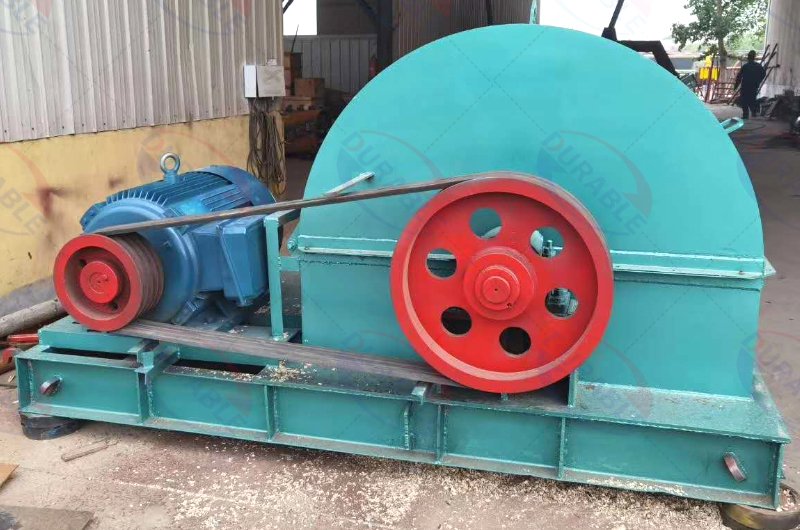
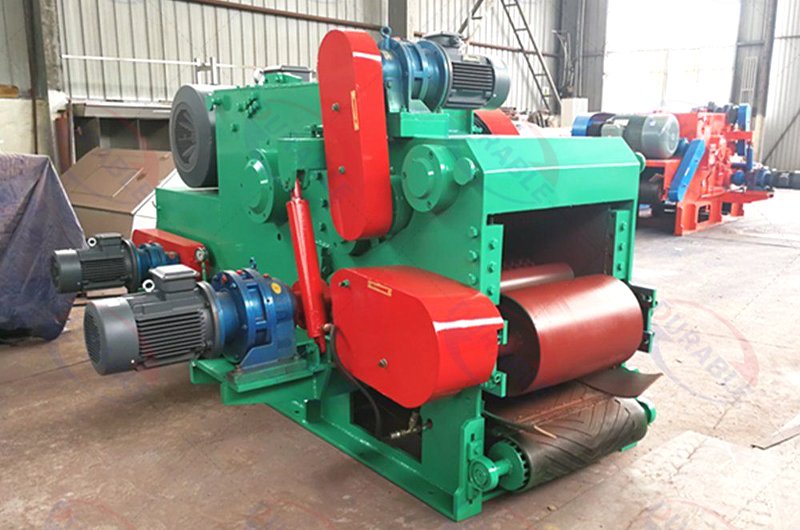
Disc Wood Chipper:
- Best For: Round logs, straight branches, and dimensionally uniform wood.
- Output Quality: Produces highly uniform, high-quality chips with a consistent size and thickness. This is because the wood is fed at a controlled angle into the disc, allowing for a clean, scissor-like slicing action.
- How it Works: A heavy disc with knives mounted radially on its face spins. Wood is fed into the disc at an angle.
Drum Wood Chipper:
- Best For: Irregularly shaped materials, such as tree stumps, wood pallets, construction debris, and a mix of bushy branches and leaves.
- Output Quality: Produces chips that are less uniform in size and shape. Because it’s more of a “bludgeoning” or “chopping” action, you tend to get more fines (dust) and oversized slivers.
- How it Works: A large, heavy cylindrical drum with knives mounted on its surface rotates. Material is typically fed from the top and is chopped as it comes into contact with the spinning drum.
How to Choose:
- If your primary goal is to produce high-quality, consistent chips for pellets, paper pulp, or boiler fuel from logs and clean wood, the Disc Chipper is your best choice.
- If you need to process a wide variety of dirty, irregular waste wood and your main goal is volume reduction, the Drum Chipper is more forgiving and better suited for the task.
| Feature | Disc Wood Chipper | Drum Wood Chipper | What This Means for You |
|---|---|---|---|
| Ideal Raw Material | Round logs, straight wood | Irregular waste wood, stumps | Choose based on what you need to process. |
| Chip Quality | High, very uniform | Lower, less uniform | Disc chippers are essential for high-spec applications. |
| Feeding Mechanism | Angled, controlled feed | Top-down, more aggressive | Drum chippers are more forgiving of oddly shaped material. |
| Applications | Pellets, Pulp & Paper, Boilers | Volume reduction, mulch, rough fuel | Match the machine to your final product’s requirements. |
Should I Choose a Mobile Diesel or Stationary Electric Model?
This decision depends entirely on your operational workflow. Neither is better than the other; they are simply designed for different jobs.
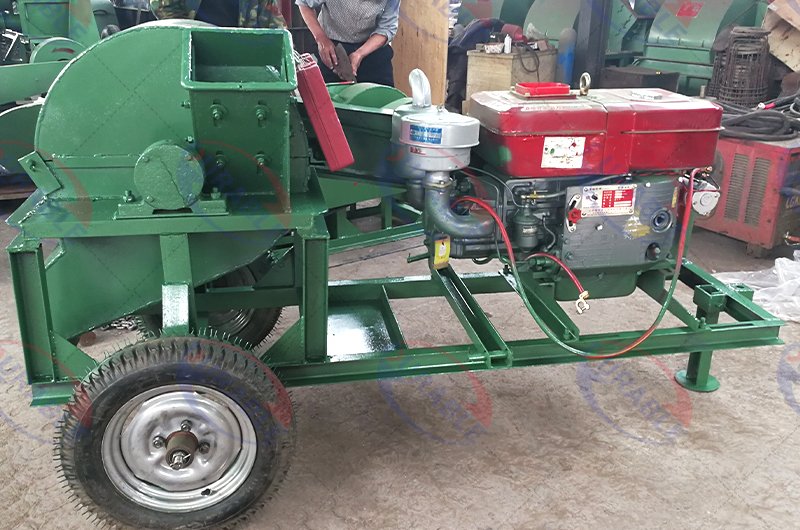
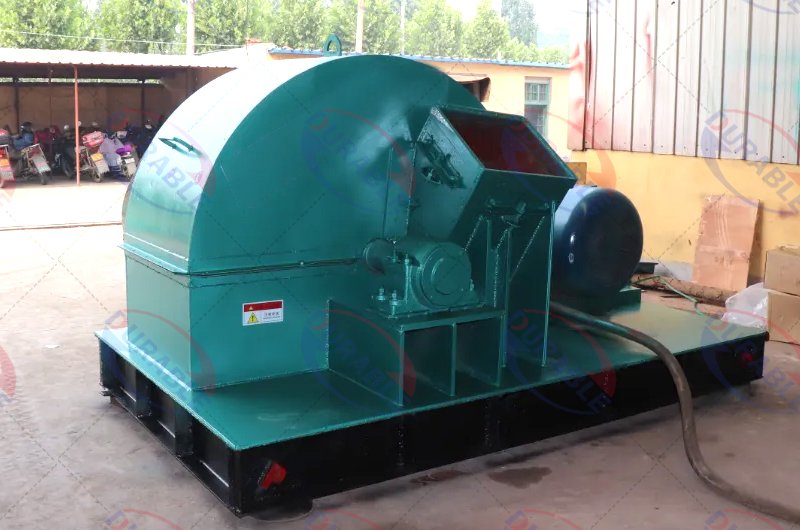
Mobile Diesel Wood Chipper:
A mobile wood chipper is mounted on a trailer or chassis and powered by its own diesel engine.
- Best For: Forestry operations, land clearing, and large-scale landscaping where you need to process wood on-site. It eliminates the cost of transporting bulky logs and branches from the forest to a central processing yard. You bring the machine to the wood.
- Key Advantage: Flexibility. You can move it from one site to another easily.
Stationary Electric Wood Chipper:
A stationary model is designed to be bolted down in a fixed location (like a sawmill, pellet plant, or recycling yard) and is powered by a large electric motor.
- Best For: Centralized processing facilities where wood is brought to the machine.
- Key Advantage: Lower Operating Cost & Maintenance. Electric motors are quieter, produce no emissions, and have significantly lower running costs (electricity vs. diesel fuel). They also require far less maintenance than a diesel engine. If your operation is in one place, electric is always the more economical long-term choice.
How Durable Are the Blades, and How Often Do They Need Maintenance?
The chipper blades are the most critical wear part of a Disc Wood Chipper. Their condition directly impacts the quality of your chips and the machine’s overall efficiency. Dull blades don’t cut; they smash and tear the wood, which increases power consumption and produces poor-quality chips with lots of dust.
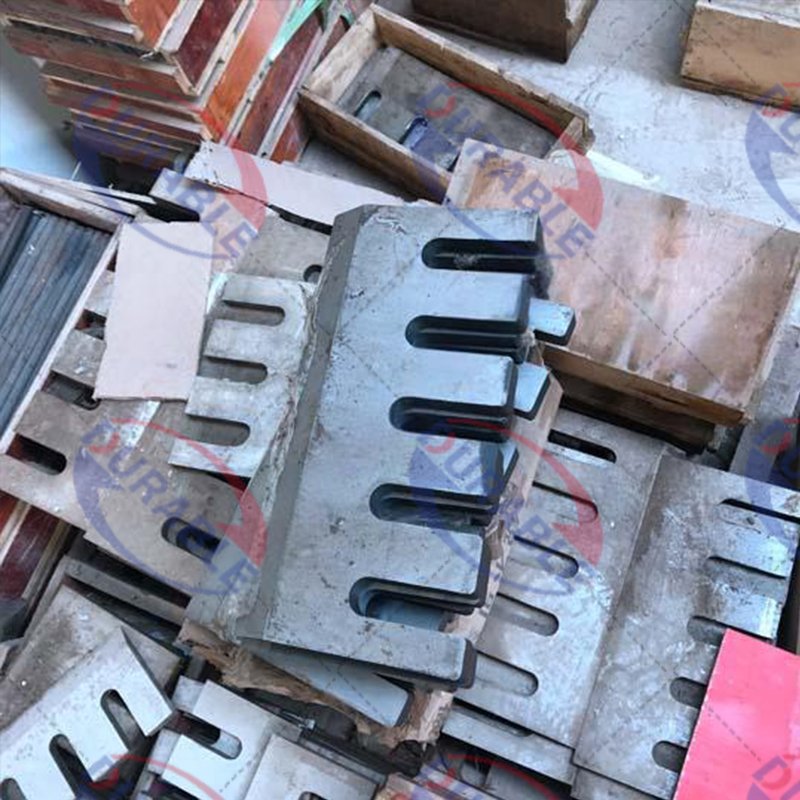
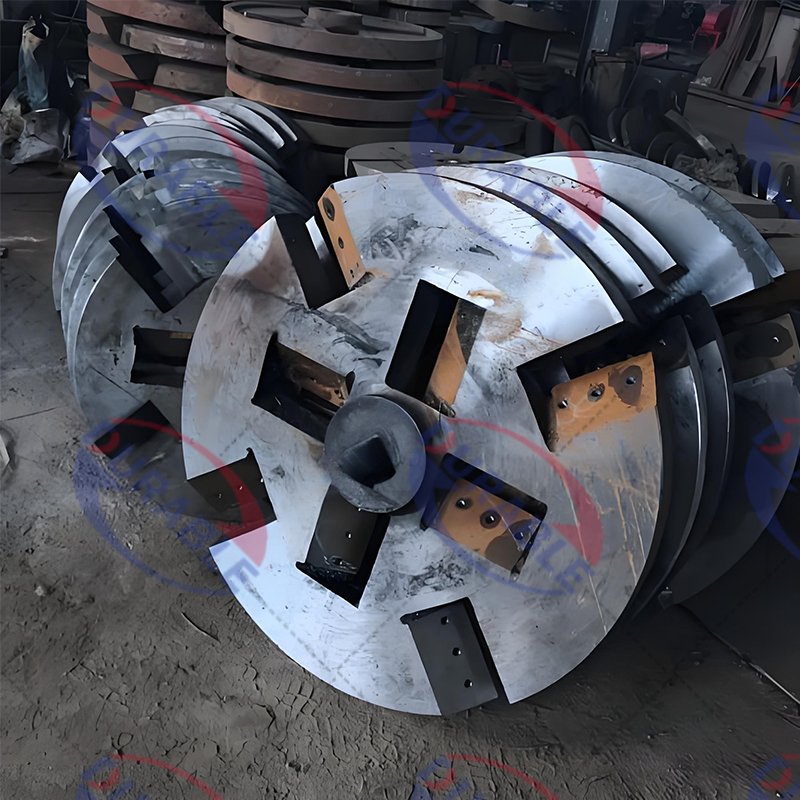
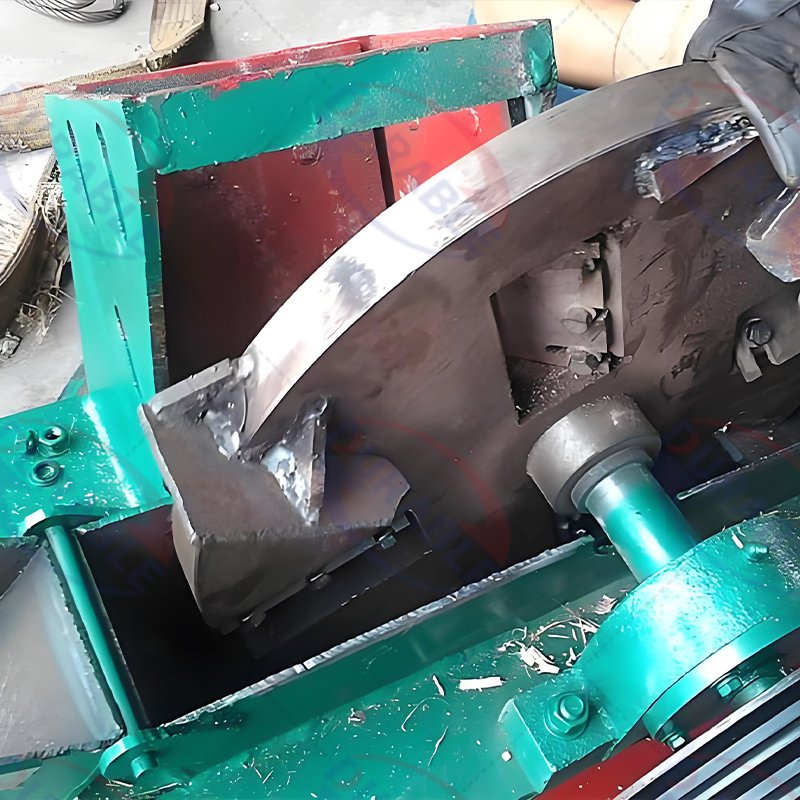
The lifespan of a set of blades depends on three things:
- Blade Material: We manufacture blades from high-quality, hardened tool steel (like A8 or D2 alloy steel) designed to hold a sharp edge while resisting chipping.
- Type of Wood: Chipping softwoods like pine will result in longer blade life than chipping hardwoods like oak or maple.
- Cleanliness of Wood: The biggest enemy of a chipper blade is dirt, rocks, or metal embedded in the wood. Even a small amount of dirt can dull blades quickly.
In a typical operation processing clean wood, you should expect to sharpen the blades every 8 to 10 hours of runtime. Most machines are designed for quick blade changes, often taking less than 30 minutes. It’s standard practice to have at least two or three sets of blades for each machine. This allows you to swap in a sharp set immediately and then sharpen the dull set when you have time, ensuring minimal downtime for your operation.
How Do You Integrate a Disc Chipper into a Biomass Production Line?
A Disc Chipper is the starting point for many biomass processing lines. It acts as the primary size reduction machine, preparing the raw material for the next steps. Here’s how it fits into a typical Charcoal Making Production Line or pellet line:
- Raw Material Input: Logs and large branches are brought to the chipping area.
- Disc Wood Chipper: An operator feeds the wood into the chipper. The chipper produces uniform chips, typically 20-30 mm in size.
- Chip Conveying: The chips are discharged from the chipper directly onto a belt conveyor.
- Screening (Optional but Recommended): The conveyor transports the chips to a screen to remove any oversized pieces (which can be sent back to the chipper) and undersized fines (dust), which can be used elsewhere.
- Storage/Drying: The clean, uniform chips are then conveyed to a storage silo or directly to a rotary dryer to reduce their moisture content before being sent to the next stage, such as a hammer mill for further size reduction or directly to a carbonization furnace.
By starting with a Disc Chipper, you ensure that the entire downstream system receives a consistent, predictable feedstock, which is the key to stable and efficient production.
FAQs
Q1: What are the main factors that affect the price of a Disc Wood Chipper?
A: The three main factors are:
- Maximum Feed Diameter (the bigger the logs it can take, the more expensive).
- Power Source (diesel engine models are generally more expensive than electric motor models).
- Capacity (higher tons per hour requires a larger, more powerful, and more expensive machine).
Q2: How do I get an accurate quote?
A: To give you an accurate quote, we need to know: 1) What kind of wood are you processing (e.g., pine, oak, mixed waste)? 2) What is the maximum diameter of your wood? 3) What is your required output capacity in tons per hour? 4) What will you use the chips for? This helps us recommend the right model and blade configuration.
Q3: Does a Disc Chipper create a lot of noise?
A: Yes, all wood chippers are inherently noisy. Stationary electric models are significantly quieter than mobile diesel units. It is essential that operators always wear appropriate personal protective equipment (PPE), including hearing protection, when working near the machine.
Q4: What is the difference between a wood chipper and a wood shredder?
A:A chipper uses sharp knives to slice wood into uniform chips. A shredder uses blunt hammers or teeth to smash, tear, and break down a wider variety of softer, more irregular organic material (like leaves, compost, and small twigs) into a mulch-like product.
Q5: Can I chip wood with nails in it?
A: It is strongly discouraged. While a heavy-duty chipper might process an occasional nail without catastrophic failure, it will severely damage and dull your blades, leading to costly replacements and poor performance. It’s always best to use clean wood.
 Durable Machinery
Durable Machinery
